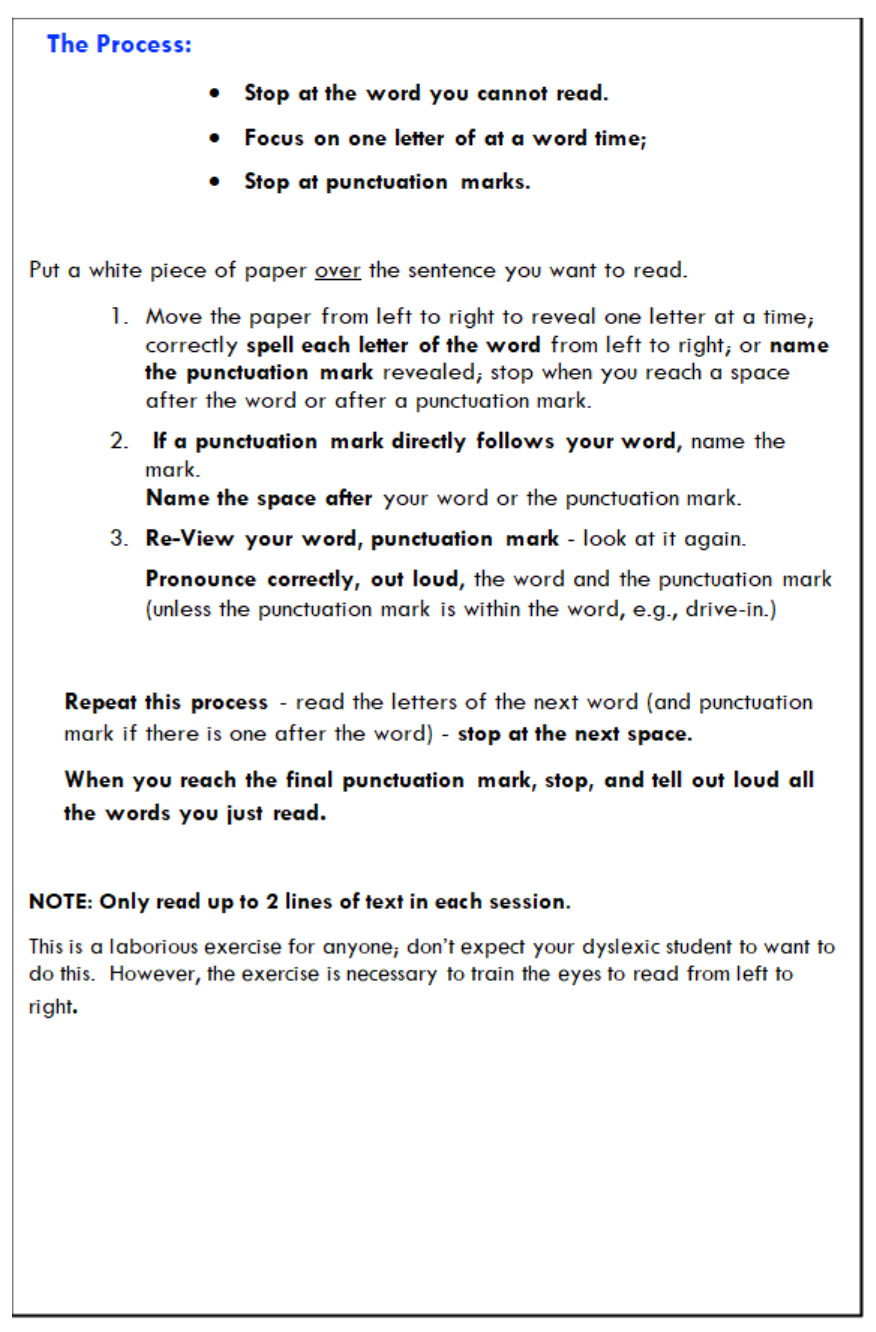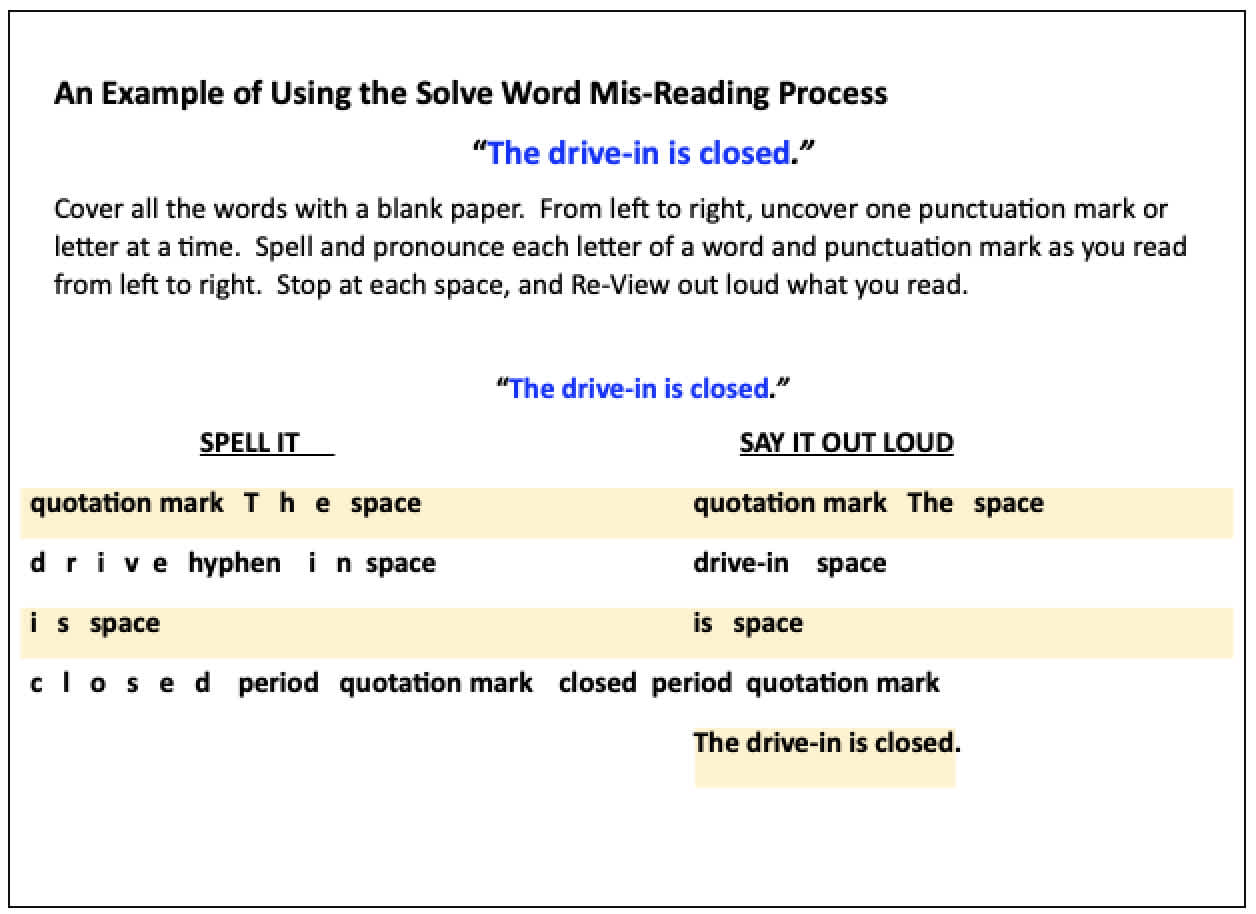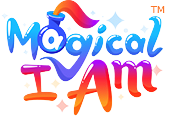Solve Word Mis-Reading - Instructions

Perhaps one of the most frustrating activities for a dyslexic child is reading. This is because of the way dyslexic children process words, and their lack of understanding of how to use punctuation marks to gather meaning from what is read. When the dyslexic 3-D learner puts their Mind’s Eye on their "The Spot” (a Bindu), they have a tool that provides them with a way to stabilize their many perceptions. “Going to The Spot” resolves confusion by ending the creatively altered perceptions of the unrecognizable word. Once a child can regularly go to The Spot and consistently see a word so they can recognize it, the child is ready to learn to solve Word Mis-Reading and to master the rhythm of pausing at punctuation marks. At this point, they are ready to begin to master abstract words and symbols while playing Sky Village. – Trail of Spells.
First, children must master all 3 steps to reading with comprehension:

The 3 Reading and Comprehension steps:
Step (1): Go to The Spot to stabilize your visual perception so you can master recognition and understanding of abstract words and symbols.
Step (2): Solve Word Mis-Reading to develop the ability of focusing on one word and then one letter at a time so you can recognize and read them correctly.
Step (3): Pause at Punctuation Marks: learn to use punctuation properly when reading. Also, watch the video of Punctuation Mastery 1,2,3: for a full explanation about the use of the rhythm, reading, and punctuation marks to understand an author’s message.
Step 2 Toward Reading Comprehension: Solve Word Mis-Reading
This exercise is designed to consider the visual and auditory predisposition of dyslexics and provide the discipline necessary for mastering word recognition and reading. It is remarkable how simple this reading process is, and how well it works; and how often a new reader rushes through reading sentences and makes mistakes by not taking the time to see every word as it is written.
The purpose of this exercise is to enable the individual to recognize groups of written letters as a word, and to skillfully use punctuation marks. The student is trained to look from left to right at each letter or punctuation mark, and to look at one character at a time, rather than seeing a string of letters as a unit (a word).
Each time the child does not recognize a word, they must resist the habit of sounding it out phonetically or guessing.
Instead, we ask the child to:
1] Spell the letters of the word out loud.
2] Listen to how the helper (parent/teacher/tutor) pronounces it.
3] Re-view the word (look at it again) and say it out loud.
Even when the reader discovers that they know the word while they are spelling it, they must complete the spelling of the word before reading the word out loud. This allows the individual to develop greater conscious control of their reading. The exercise ends the tendency of the habit of run-on-reading derailing any chance of comprehension.
The Process of Solving Word Mis-Reading
The technique teaches the dyslexic to read sequentially each letter of a word, and its punctuation mark if it exists. The child learns to slow down so they can “perceive” correctly all the letters of each word on the page while they read.


Full completion of Step 2 Solve Word Mis-Reading leads to the development of the skill to read with comprehension for two reasons:
[1]Completion of this process helps the dyslexic child overcome the automatic response of looking at a string of words as a whole unit and mis- reading) the words.
Since it’s a dyslexic’s tendency to view words holistically they may misread or guess at a word’s meaning, instead of accurately viewing the word. They can make incorrect letter or word substitutions, e.g., reading “simply” as “simple,”
“example” as “explain,” or “syllable” as “symbol”. This obviously changes the context of what they are reading.
The exercise requires the reader to scan each letter of the word sequentially from left to right.
When the reader says each letter and punctuation mark, they pay attention to what their eyes are tracking - i.e., every written character (letter and punctuation mark) - and they correctly identify each one. Comprehension improves because they no longer guess the meaning of a word.
[2] This process develops the discipline required to strengthen neural pathways that support the tendency to read in this successful manner each time. Progress is obvious when the child begins to fluidly call out the written characters and recognize words.
Correct recognition of groups of letters as a word and recognition of punctuation marks must be achieved before comprehension of what is read can occur.
At first in Step 2, we look for recognition of punctuation marks and of the written 2-D letters that make up whole words; later, we work on developing comprehension while reading by using the rhythm of punctuation marks.
Review the Instructions for the final Reading Step 3: Punctuation Mastery 1,2,3 - Instructions.
In the future, while your child is reading...
Whenever your child requires more than a count of 3 to view and read a word out loud, they must STOP.
At this point the reader must stop “guessing” and “trying” to read the word. They must immediately start the process of “Solve Word Mis-Reading” in order to discover how to read the word they cannot easily read.
They spell out the word that has them stumped;
listen to its correct pronunciation (which is provided by the helper); and
the reader re-views the word and pronounces it correctly. Then they continue to read.
